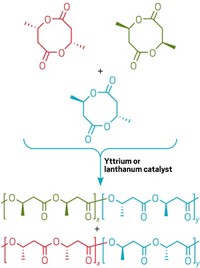Advertisement
Grab your lab coat. Let's get started
Welcome!
Welcome!
Create an account below to get 6 C&EN articles per month, receive newsletters and more - all free.
It seems this is your first time logging in online. Please enter the following information to continue.
As an ACS member you automatically get access to this site. All we need is few more details to create your reading experience.
Not you? Sign in with a different account.
Not you? Sign in with a different account.
ERROR 1
ERROR 1
ERROR 2
ERROR 2
ERROR 2
ERROR 2
ERROR 2
Password and Confirm password must match.
If you have an ACS member number, please enter it here so we can link this account to your membership. (optional)
ERROR 2
ACS values your privacy. By submitting your information, you are gaining access to C&EN and subscribing to our weekly newsletter. We use the information you provide to make your reading experience better, and we will never sell your data to third party members.
Materials
Epoxy resins without BPA
Naturally occurring syringaresinol used in new synthesis
by Elizabeth K. Wilson
January 30, 2017
| A version of this story appeared in
Volume 95, Issue 5
A biobased bisphenol can be used to prepare renewable epoxy-amine resins, eliminating the need to use potenially-toxic bisphenol A, chemists report (ChemSusChem 2017, DOI:10.1002/cssc.201601595). BPA is a petroleum-based endocrine disruptor and has been banned by the Food & Drug Administration for use in children’s product packaging. Epoxies, with their hardy chemical and thermal properties, are ubiquitous, used in materials such as electronics and insulators. Scientists have been avidly looking for substitutes for BPA in epoxies. A team led by Florent Allais of AgroParisTech has found that syringaresinol, a naturally occurring, non-endocrine-disrupting bisphenol found in plants such as Syringa patula and Magnolia thailandica, can be used to produce epoxy-amine resins. The researchers developed a synthesis of syringaresinol via a chemo-enzymatic pathway. Though the epoxy-amine resins based on syringaresinol have mechanical and thermal stabilities that are close to that of BPA-produced resins, the authors say, “the search for a biobased bisphenol able to compete with BPA is not over yet.”
CORRECTION:
This article was updated on Aug. 28, 2023, to correct the DOI number. It is 10.1002/cssc.201601595, not 10.1002/cssc.20d1601595.




Join the conversation
Contact the reporter
Submit a Letter to the Editor for publication
Engage with us on Twitter